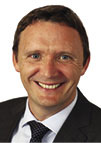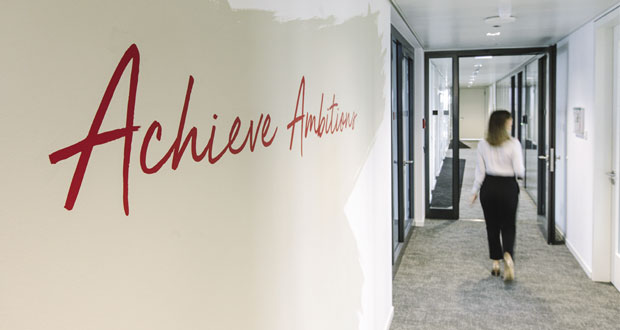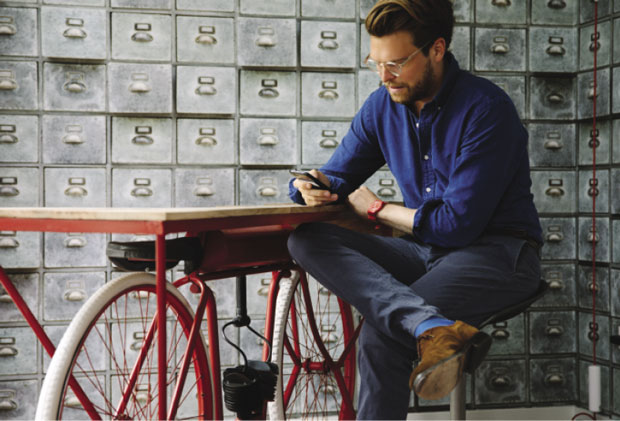 During the pandemic, JLL has taken regular readings on office workers attitudes to where and how they work. Mark Caskey, CEO, EMEA Corporate Solutions at JLL tells Sara Bean it’s the creation of a satisfying workplace experience that counts
During the pandemic, JLL has taken regular readings on office workers attitudes to where and how they work. Mark Caskey, CEO, EMEA Corporate Solutions at JLL tells Sara Bean it’s the creation of a satisfying workplace experience that counts
In spring 2020, as people settled into working from home, the idea of working in an office started to look obsolete, but as the novelty passed, workers feel stuck in an ‘endless day’ and want some balance in their lives(i). The forced adoption of remote working has created opportunities, but is also exposing new social risks, according to JLL, which has been avidly measuring the effects of the disruption over the past year as workers adapted to homeworking in compliance with guidelines. The research reveals an appetite for greater flexibility and new hybrid ways of working.
Mark Caskey, JLL’s CEO, EMEA Corporate Solutions has over 20 years of experience in corporate real estate, including a stint at flexible office provider Regus, so he’s well placed to ponder the direction of travel for the workplace and how the traditional corporate office could coexist in future with that of flexible and coworking offerings.
His career has included working at Barclays Capital, globally responsible for the real estate portfolio decisions for the investment bank. He then joined and led CBRE’s corporate solutions business in EMEA, during which they acquired Norland Managed Services, which represented for the first time in Europe a traditional real estate player moving into the FM space.
He explains: “I then went to work for Regus as Global Head of Network Development, responsible for the growth of their business networks around the world, where the focus on the expansion of flex as an offer actually is a trend we’re talking about so much more post-COVID. In many instances, creating a network of flexible offices for companies and people to work really holds true now.
“Since joining JLL in 2016, I have seen increasing outsourced portfolios and a trend towards the design and build of workplaces that inspire companies and their employees to thrive. I’ve been CEO of our corporate solutions for over the last two years and our core remit is to provide end to end real estate services for occupiers. This includes managing their portfolio strategies wherever they are based, including the acquisition of lease space, organisational change, the design of their office to be fit for the future, and ultimately the facilities management aspect of managing buildings.”
FUTURE OF THE OFFICE
The big question of the moment is the future of the office, which from the CRE perspective Caskey explains is difficult to predict because corporate business models and the economic future is now much more volatile.
“Many corporate occupiers have huge owned assets, and therefore can explore the opportunity to monetise those assets, through a sale and leaseback (i.e. leasing back the space after the sale). Corporate real estate sales has been a trend over the past 10 years and 2020 reached a peak of €27 billion, as it is a way that corporates can monetise the values of their asset portfolios in a way that enables capital raised to be reinvested to support post-pandemic recovery and growth strategies.”
Longer term he adds, “it is difficult to predict how much space will be needed. With today’s focus on experience, agility and flexibility, the future of real estate will continue to be defined by flexible space and a flexible component will take up more of a corporate occupier’s portfolio in the future. We predict that 30 per cent of all office space will be flexible in some way by 2030.”
“The latest trend is around lease lengths. We’re seeing in some of the secondary markets the requirement to have more flexibility with shorter lease terms and options for expansion/retraction coming into the lease negotiations.”
The question that companies are facing at the moment is on how much space they will actually need in the future.
“Pre-COVID that was 1.2 days per week on average but now we’re seeing it as being two days a week on average. Our latest research shows that 63 per cent of the workforce want to keep the possibility to alternate between different places of work in the future.
“The reality is companies have a lot to consider when assessing if their real estate portfolio is suitable for their changing needs. The question of how much space their businesses require has become a complex, multi-layered question which many corporates are still grappling with. But real estate occupancy will remain in line with pre-pandemic levels, with usage adapting to changes such as decreased density and increased space for collaboration and socialisation.”
Caskey also believes that flexible working will go beyond working from home to working from anywhere, as alongside a mix of home and head offices, companies are considering the hub and spoke concept to give staff the alternative of working nearer home, rather than commuting long distances.
“The interesting choice for CRE will be whether they go to a flex operator or choose their own leased property? It depends on how much space they’d require, and whether they have the option of dedicated spaces within business centres.”
CULTURAL NEEDS
We all saw the headlines over the past year, when some of the big corporates announced plans to scale back their real estate, but according to Caskey, that stance has dramatically softened as we’ve gone through the pandemic.
“Most have reflected that the office is a core part of their business model and a way of bringing the culture of an organisation to life. Attitudes have shifted from an initial view, when some clients were talking about reducing space by 50/60 per cent at the start of the pandemic to realising the office is a critical part of their business models and plans for the future.”
Compared to surveys JLL carried out in Q3 and Q4 last year(ii), they’re now finding that approximately 80 per cent of employees want to be back in the office at least once as part of their working week. Sevent-five per cent of workers miss the office, with productivity at home declining, 37 per cent of the workforce feel more productive at home than in the office today, compared with 48 per cent in April 2020. As a result, JLL is seeing an increasing demand from clients to have hybrid working as part of their business models.
Says Caskey: “Companies are also thinking about making the re-entry back into the workplace a memorable experience and asking ‘how can it be different?’ If we listen to those people who want to come back into the office there’s going to be a proportion of them who are going to require desking facilities. Others are going to come into the office for knowledge points, sharing and engaging with their peers; all of which is incredibly difficult to do for a sustained period when not being in a physical environment such as the office.
“A year after the start of COVID-19, some signals of homeworking fatigue stand out. We are also seeing a deterioration around productivity, with more concerns around health and wellbeing. These factors are very much top of the mind now and it’s a C suite conversation. A lot of that comes back to the importance of the office for their brand, their culture and ultimately the health and wellness of their employees.”






